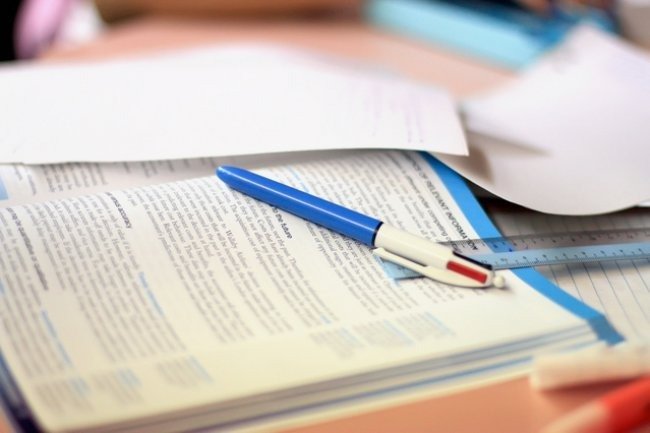Table of Contents
Novice teachers leaf through the textbook grammar contents: does it tick all the boxes? You don’t want to leave out that 3rd Conditional (heaven forbid).
More experienced teachers delve into the vocabulary pool trying to hit that perfect balance (not too little – not too much) that will keep their students occupied yet motivated.
My experience in the book business has taught me in more ways than one that grammar and vocabulary are essential, but they are usually not what makes a textbook successful.
The greatest book printing firms create the best books. They have the necessary certifications and qualifications to produce textbooks for schools and institutions. When looking for a decent book, it’s also a good idea to see whether the book printing company is reliable to make sure you’re getting the greatest deal.
What matters most is not ‘what’ but ‘how’. Having that in mind, I advise the savvy teacher to try a different road.
The characteristics of good textbook that I recommend looking for first are as follows:
1. Free space
Young students don’t read; they browse. That’s because they spend most of their time reading from screens, be it their TV, laptop, tablet or smartphone.
So don’t expect them to focus on a text-rich page and read it from top to bottom. Because their eyes are going to wander.
Empty spaces work like rest areas for the eyes. They help you focus on the good stuff.

2. Visuals
No matter what the age of the target audience is, a modern textbook must have visuals. Outstanding visuals.
Why, you may ask. Because Apple does. And Sony. And Disney. And Pixar. Because that’s who you are competing against when you are fighting for your students’ attention.
Consider also the increasing number of students with learning difficulties such as dyslexia. Images break up the text and make it more readable. Students with dyslexia, who may struggle with reading, they often excel in visual thinking. You can consult the relevant bibliography.
3. Age-appropriate material
When selecting textbooks for pupils, various factors must be considered, including their age and degree of interest. Take a look at the people in the photos in the book. Do they look like your students? Could they be in your class?
What about the topics? Are the meanings easy to grasp? Would they make your students want to read on?
And finally, the fonts. Are they the same size as your students’ handwriting? If the answer to all questions above is yes, then the textbook is just right for your students’ age.
There is a growing demand for Children’s literature Writing courses as well. Try the Children’s literature writing course by the Institute for Writers [IFW].

4. Well-balanced textbook design
There is nothing more off-putting to students and teachers alike than a cluttered page. It shows that the author tried to cram everything into a tiny space because they had no clue what to prioritize. And this is a huge red flag.
When in doubt, go for the simplest form. Look for books with a clear and consistent unit structure. Count the number of font types used in a single page: one or two is ideal, three or more and it gets tiring.
The same goes for columns: a single text column is most pleasing to the eye, two or more should better be left to newspapers.
Of course, a decent textbook will last a long time. As a result, purchasing one with a hardcover is strongly advised. Hard-bound books have a long shelf life and are well-protected from wear and tear. They have a lot of color photos that stick out on the website. Hard-bound textbooks also look nice on the bookshelf or the coffee table. They have a professional feel and look to them, and they make a statement.
Final point: activities that start in one page and run over to the next are completely out of the question.
5. Textbook storyline
Everybody loves a good story. But it needs to be well-written. In other words, it must have a setting, characters, a plot, a climax, and a resolution.
To increase learners’ memory abilities, sentence structure, spelling, and grammar, select textbooks with compelling tales for reading and class discussion. Consider picking storybooks by well-known authors, both historical and contemporary. Young brains will be able to learn from the finest writers of the past in this way. They’ll learn about the imaginative and fantastic adventures of famous tales like Mark Twain’s Huckleberry Finn.
In ten years’ time your students won’t remember the title of the textbook, but they will remember the names of the main characters. Hopefully.
In conclusion, textbook evaluation is a lengthy process. The above characteristics of textbook are just a quick and easy way aiming to take some of the weight off the shoulders of busy teachers. ELT Coursebook Evaluation Checklist will give you five criteria of a good textbook, especially for those who can afford the time and energy to dig a bit deeper.
If you are interested in the general principles and procedures used to evaluate a published textbook, Professor Jack C. Richards suggests that the analysis should involve identifying these kinds of information in the qualities of a good textbook:
- Aims and objectives of the book.
- Level of the book.
- Skills addressed.
- Topics covered.
- Situations it is intended for.
- Target learners.
- Time required.
- Components.
- Number and length of units.
- Organization of units.
The full article can be found here.
Conclusion
They should be so designed that on the one hand they may be written according to the psychological requirements of the students and on the other they should serve the purpose of the teacher who wish to impart knowledge to the students in a successful and interesting manner.
Useful Resources
- Grammar wiki
- Plainmath
- Phonics textbooks
- Epic! children’s books
- Playstories
- Create your own book online
- Redshelf textbooks
- Textbook Brokers
- Textbook rentals Amazon
- Textbook APA citation
- Textbooks online
- Textbook to audio
- Textbook price comparison
- Textbook buyback
- Where to sell textbooks
- Textbook recycling
- Textbook publishers
- Textbook donation
- Textbook exchange
- Free textbook PDFs


Helpful for me.
thank you so much ….. your blog is soooo helpful for me
Thanks for this great article
Interesting documents.
Great topic and well written. Do you have any more resources about this that you reccommend?